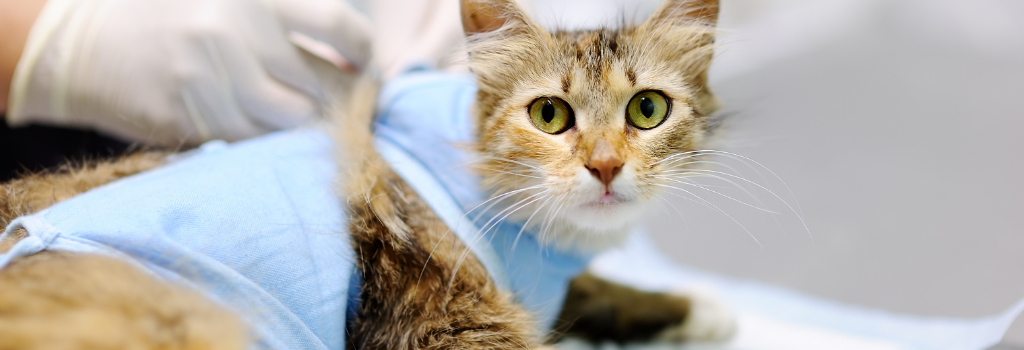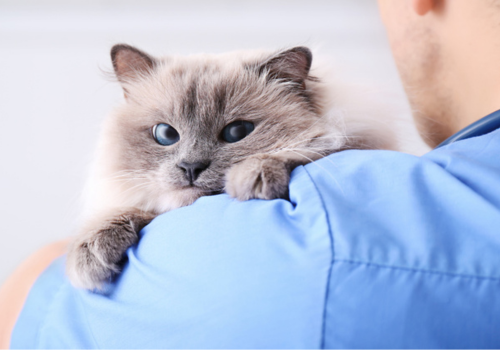Realizing that your cat is experiencing a medical emergency can be traumatic, whether they’ve been injured or are having difficulty breathing. While turning to the internet for help is unlikely in the midst of an emergency, you might feel compelled to do some online research in anticipation of needing the insight in the future. At Solano-Napa Pet Emergency Clinic, we work diligently to bring you the accurate information you need. To avoid the misinformation often found online, we’ve taken the most frequently asked questions about cat emergency care and answered them as thoroughly and accurately as possible to ensure you have the facts.
If you’re looking for a highly trained veterinarian in Fairfield, CA, we’re here to help your cat in any emergency situation, so please call us at (707) 864-1444.

What should I do if my cat is having an emergency?
The first question to ask yourself is, “What is an emergency?” From a veterinarian’s perspective, an emergency is anything that warrants immediate medical care, and if not provided, loss of life or quickly escalated sickness is likely.
The most common cat emergencies include:
- Fractures
- Automobile injury
- Bite/fight wounds
- Burns
- Toxins ingested
- Breathing difficulties
- Sudden collapse
- Urinary blockage (males)
The following may not be life-threatening, but should also be considered cat emergencies:
- Eye injury
- Pregnancy issues, including birthing difficulties
- Seizures/convulsions
If your cat’s situation meets any of these criteria, call your veterinarian immediately so they understand what’s going on prior to your arrival and can prepare accordingly. If it's after hours, your outreach will likely roll over to the veterinarian on call. While they can possibly talk you through steps to take at home, 90% of the time your cat will need to be seen at an emergency veterinary hospital.
What are some signs and symptoms that my cat might be experiencing an emergency?
If your cat is bleeding externally, that is an emergency that you can see, but internal bleeding is harder to determine. Any changes in breathing, lethargy, pale mucous membranes, weakness and collapse are all signs of internal bleeding in a cat.
Respiratory distress is always an emergency, which can be heart-related, fluid in the chest, or pneumonia. Signs and symptoms of difficulty breathing in a cat include increased respiratory rate, increased heart rate, open mouth breathing, and panting.
Sudden collapse is also a significant sign of an emergency, and could be an issue with the heart or lungs. Collapse could also be the result of heatstorke, especially if preceded by excessive panting, lethargy, and distress. Heatstroke in common in cats that have been left in a carrier or unventilated car for too long.
Urinary blockage can be a life-threatening emergency, primarily in male cats. Signs of blockage include straining to urinate or inability to produce urine, frequent small urinations, blood in their urine, and loudly yowling or vocalizing. Some more stoic cats may show more subtle signs of discomfort such as hiding, urinating outside the litter box, or refusing to eat.
Persistent diarrhea and/or vomiting should also be considered an emergency situation, and could be the result of poisoning, intestinal obstruction, or acute gastrointestinal infection. Repeated diarrhea or vomiting can quickly lead to dehydration if it persists beyond 6-12 hours.
The AVMA has created a list of 13 animal emergencies that require immediate attention.

Is it best to call an emergency hospital before coming in?
It is best to call an emergency facility before arriving. Regardless of it being your regular veterinarian or an emergency hospital, you should give them advance notice so they can prepare and be ready for your cat the minute you walk in. Being ready in advance with a table setup, fluids, catheter and whatever else they’ll need will save time, expedite the process, and provide your cat with a more promising outcome.
Should I give my cat first aid at home, and what should I have in a first aid kit?
While it’s always smart to be prepared to deal with an emergency situation, you could be putting yourself in harm’s way since a cat’s demeanor isn’t their normal state of mind when they’re traumatized or hurt. For this reason, it’s best to wrap them up in a towel or blanket, put them in a carrier, and get them safely to your veterinarian or emergency hospital as soon as possible.
At Solano-Napa Pet Emergency Clinic, we advise caution with trying to administer first aid at home unless you are trained in this area. At most, minimize blood loss by bandaging or wrapping the area if it’s a wound, and applying pressure as you make your way to see us. When in doubt, call us.
How will a veterinarian treat my cat in an emergency?
With any emergency situation, your veterinarian will take the utmost care, working quickly to help your cat while communicating with you every step of the way.
In a cat emergency situation, your veterinarian will:
- Check their vitals
- Check for dehydration and blood loss
- Use an IV catheter to administer fluids and life-saving medications quickly
- Get oxygen therapy if needed
Once the veterinarian has stabilized your cat with a steady heart rate and steady breathing, they will start diagnostics such blood work, x-rays, ultrasound, and anything else to help figure out what's going on with your cat.
Why is prompt treatment in an emergency so important for my cat’s health?
In an emergency situation, permanent injury or death could be the end result if quick action isn’t taken. If you're in doubt about whether or not your cat is experiencing a medical emergency, contact your veterinarian, communicate your cat’s symptoms along with the timeline of events, and heed their advice.
There are many situations that cat owners consider to be emergencies, but a veterinarian will confirm they are not. However, always consult with your veterinarian first. Perhaps it's a stressful situation for you as the owner, but when details are communicated to a veterinarian, at home remedies can be advised or a regular appointment can be scheduled for the near future.
How do you perform CPR on a cat?
CPR on a cat is very similar to what is done to humans, specifically the way cardiac compressions are given over the thorax to help the heart pump. Cat CPR also includes giving breaths. The American Red Cross offers step-by-step instructions for pet CPR, including how to administer chest compressions, giving rescue breaths, and checking for breathing.
If you have further questions about cat emergency care, reach out to your veterinarian. If you live in or near Fairfield, CA, we’d love to see your cat for any needs, so please don’t hesitate to call us at (707) 864-1444 or email us at staff@solanopetemergency.com.
